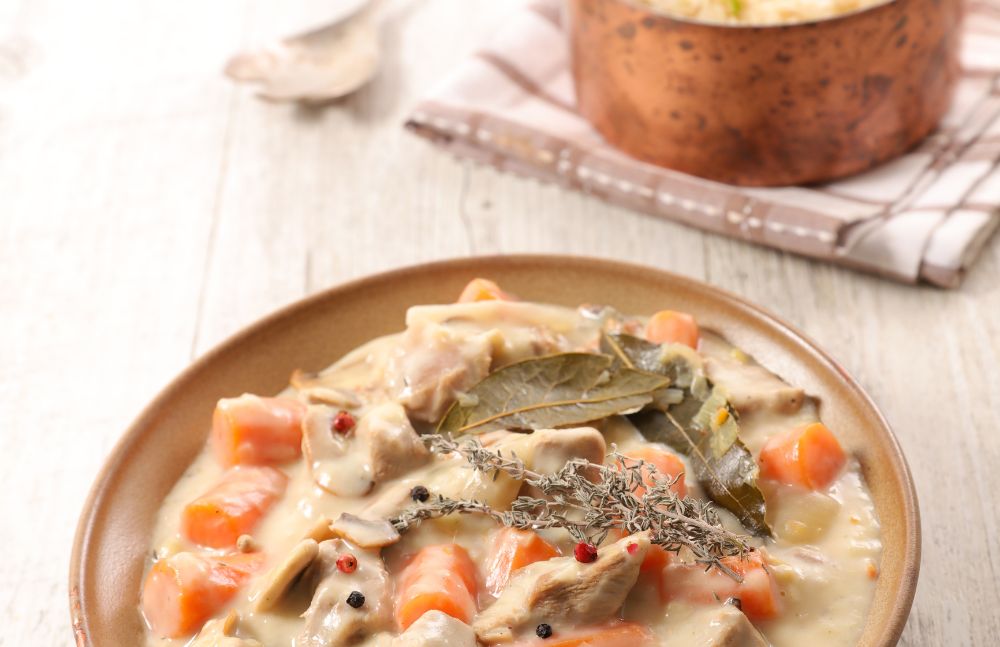
This Sunday family dish has become a benchmark of French gastronomy. You'll find it just as well in a small country restaurant as in a fine city eatery, or even at a more upscale address. This popular dish, once reserved for the aristocracy, is enjoying a revival and is constantly being revisited by top chefs.
An aristocratic dish that became popular
It's impossible to pinpoint its regional origins, as the recipe spread rapidly throughout France. There are as many variants as there are regions that claim to have produced it. Blanquette was originally a recipe for roasted leftover white meat in a white sauce. The dish's whiteness gave it its name. Roasted meat was the preserve of the aristocracy; it was only when the dish evolved towards boiled meats, a more popular cooking technique, that the recipe became more democratic.
It was in 1867 that Jules Gouffé came up with the idea of preparing this dish from raw veal meat, boiled in salted water, peppered and flavored with a bouquet garni, and bound at the end of cooking with a roux, egg yolks and cream. This is how "old-fashioned blanquette" was born. Since the disappearance of the roux, and even of the cream at the end of cooking for dietary reasons, it has lost its "old-fashioned" quality and some of its original flavor. From the Second World War onwards, blanquette de veau, which until then had been served as a starter, changed its status and entered the menu as a main course, accompanied by white rice. There are regional variations, such as the addition of garlic in Provence.
And the wine?
Blanquette de veau is prepared with tender cuts of meat (shoulder, flank steak, tenderloin) for softness. It's accompanied by spring onions, button mushrooms, carrots and rice in a white sauce, all of which give the dish a slightly gelatinous appearance. Despite slow cooking, the dish remains quite fatty. You'll need to choose an invigorating wine, with straightforward, simple flavors and a touch of acidity to counterbalance the dish's creaminess. The flavors of blanquette are subtle and delicate, so don't smother them with overpowering wines.
We advise you to avoid red wines, as cream-based sauces don't go well with the tannic texture of red wines. A white wine is more appropriate here, as it goes perfectly with white meats. Opt for less exuberant varietals such as chardonnay, pinot gris or marsanne. If, however, you're a fan of reds with meat, then opt for fruity reds with very little tannin, such as those made from gamay or pinot noir.





